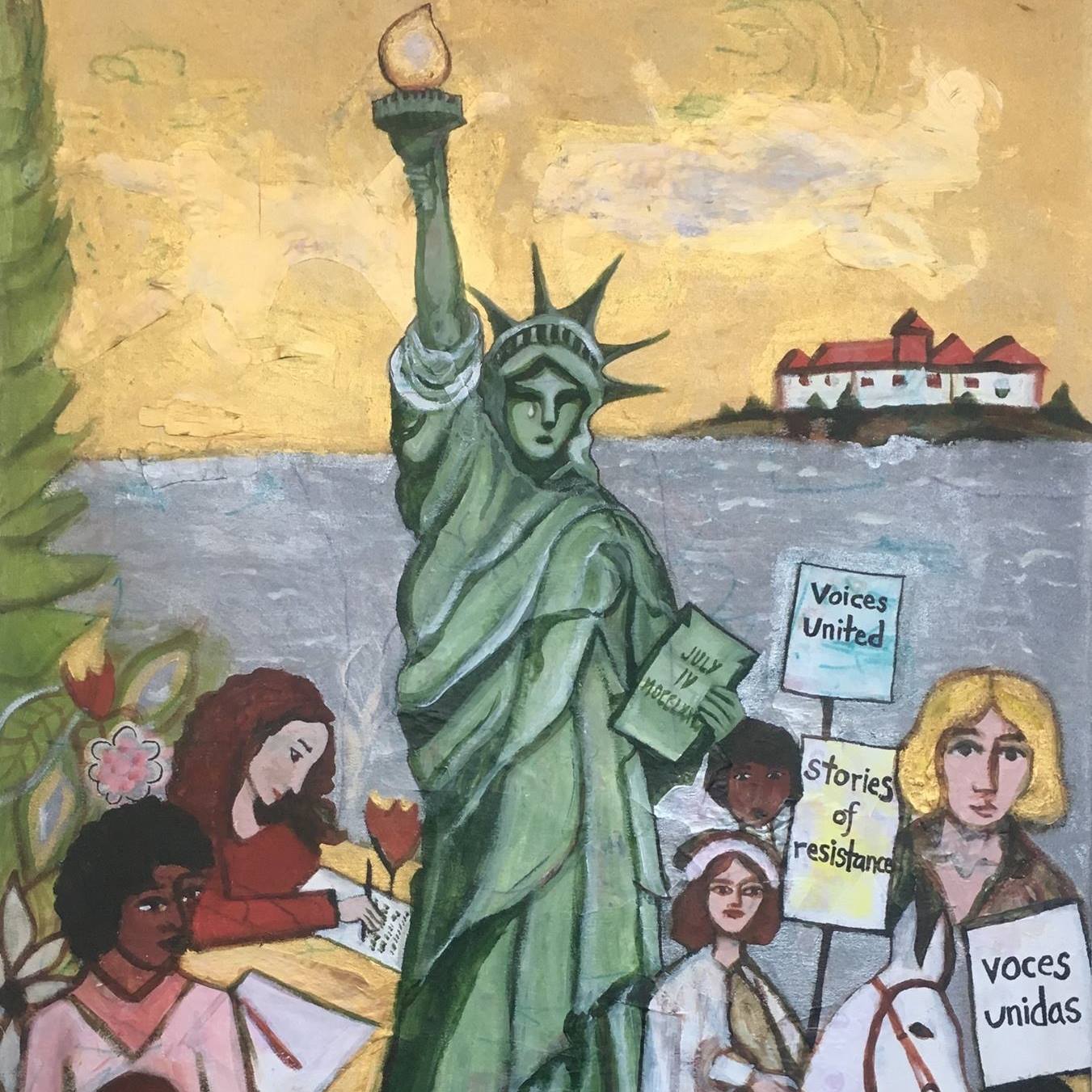
Brave Journeys: Beyond Accents and Silences
Today’s blog is a guest post, by Natalia Chamorro, Stony Brook University PhD candidate in Hispanic Languages and Literature and a Regional Economic Development Council/New York State Council on the Arts Fellow for Herstory Writers Workshop, the publishers of “Brave Journeys/Pasos Valientes” – a book that tells the stories of Latin American youth arriving in the United States.
A high school auditorium is filled by cheerful students who are chatting, laughing, and checking their phones, until one of them walks to the podium. Shy yet confident, she begins to read out in Spanish a story that she wrote, displayed in English on the projector screen. As the student continues reading, silence grows. Teachers turn around to check on their students, now caught in the narration of the teenage girl at the podium. Her story echoes a young voice whose experiences and thoughts resonate with her peers sitting in front of her.

Echoing the experience of the captivated crowd in the auditorium, something similar happens to both students and educators when they read through one of the 15 bilingual stories of Brave Journeys/Pasos valientes, a book that tells the stories of immigrant teenagers arriving in the United States from Latin America. The role of student-reader does not seem far from the one of student-author when we think about how writing and reading are not only skills to learn in school, but experiences of communication and contact that go beyond transmitting information. They are able to convey feelings, nurture empathy, and make room for understanding.
Brave Journeys/Pasos Valientes is the collective work of students, educators, and writers from Herstory Writers Workshop, an organization that connects writing with empathy and makes it a platform for all voices. Through the initiative of English Language Learners (ELL) educators, this book responds to the wide need for bilingual immigrant literature that inspires both teachers and students to engage in reading and writing activities. In the words of Long Island teacher Dafny Irizarry, whose students created the book over a period of years, and who now uses the book in her classes:
“Writers write about what they know, what they care about, and about what it is near and dear to their hearts. So if we introduce ELL students to writing, in that manner, about the things that they live and they know about, they develop a liking for writing of what matters for them.”
There is a transparent quality of young writing that reflects on the experiences, questions, and challenges we all go through as we become adults, something many immigrant kids learn fast through unexpected family separation. While much of the immigrant literature written by Latino writers includes touching memories of arrival as well, it is usually written from an adult perspective and in a different, yet equally difficult time. The reality of the stories narrated in Brave Journeys/Pasos Valientes appeals to the complexity, challenges and beauty of life, from surprisingly strong young eyes, told by those who, like every teenager, have had to cross over obstacles to reach their dreams.
What is it like to read a story that could have been written by your student?
Brave Journeys/Pasos valientes has become a powerful tool for educators to better understand their immigrant students in the United States on a more humane level. For students in the general population, it opens a window that allows them to see beyond accents and silences.
In the high school auditorium, students have respectfully listened to their peers’ stories. It is hard to imagine what is to read a piece of your life in front of so many people. The teachers say their final words, and one of them expresses how much learning the students’ stories has helped her to understand their situation better, to become more compassionate and patient. Another teacher mentions that we’ll have many teachers in life, and that today, these students were his teachers.
Writing a story, you become the author of your past, present and future.
If everyone is an intrinsic storyteller, because everyone has a story to tell, the story I carry within me wakes up when I read or listen those of others.
As one high school student reflected after having read her story in front a crowd:
Reading your story out loud is like tearing off the thorn of a rose from your skin: it hurts but you can feel how you are starting to heal already.
“I also have a story to tell, but today I will read about my future,” said one of the last students who went up to the podium.
“Brave Journeys/Pasos Valientes” can serve as a mirror for students to see the value of their own stories, or as a window for other students to better understand their peers. Student stories are powerful tools for inspiration, self-reflection, and developing empathy.
Find “Brave Journeys/Pasos Valientes” on the First Book Marketplace.
“Brave Journeys/Pasos Valientes” was published by Herstory Writers Workshop. Learn more here: http://www.herstorywriters.org/.
